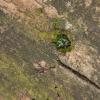The interest in organic site preparation seems to be increasing where I am in Iowa. I have been fielding more questions, and a training I provided to Natural Resource Conservation Service (NRCS) staff and other professionals this February sparked great questions and conversations. Although we do not have all the answers surrounding this large topic, we continue to learn through others' willingness to experiment.
Organic site preparation is simply using methods and materials outside of the conventional options of chemical herbicides to prepare seedbeds prior to planting. In my world, these plantings are often diverse, native habitat with wildlife and pollinators in mind. Methods of organic site prep can be solarization, smother cropping, repeated cultivation, sheet mulching, and more.
Considerations before you begin organic site preparation
There are a variety of reasons why people may be interested in this non-conventional practice, such as they are an organically certified farmer or implementing organic methods on the farm, simply don’t use herbicides, and/or they have concerns related to wildlife and/or public health. Implementing these strategies is no easy task. Time, resources, site and weather conditions, and budget can all influence the process and which method is most feasible and the best fit. Methods should be considered on a site-specific basis; it is not one size fits all.
The following questions help our stakeholders decide which methods to use:
- What is the current vegetation (perennial and/or annual weeds; broadleaf, woody, or grasses)?
- What is the soil type/s for the area?
- What is the topography of the area (flat, gently sloping, or steep slopes)?
- How sunny and/or shady is the area?
- How large is the area? Size will greatly influence the most appropriate technique
- What equipment are currently available to you (mechanical, irrigation, materials, etc.)
- Is there a flexible timeline for the project?
- Are you close to the site? Close attention must be paid to ensure the method is functioning as it should throughout the entire process
 Buckwheat smother crop in Iowa (Photo: Sarah Foltz Jordan/ Xerces Society)
Buckwheat smother crop in Iowa (Photo: Sarah Foltz Jordan/ Xerces Society)
Lessons learned from organic site preparation on farms in the Upper Midwest
The most common techniques we have used in the upper Midwest have been smother cropping, solarization, and repeat cultivation. Below, I share a few of the tips we’ve learned from our projects.
Solarization should be kept to projects that are half an acre or less in size. Used 6-millimeter greenhouse plastic is ideal, and clear greenhouse tape or clear Gorilla tape is your friend for any holes caused by deer or weeds. It is crucial that air flow be prevented, and the plastic should be laid out for at least one growing season. This method works well against non-native cool season grasses such as smooth brome and Reed canary grass but doesn’t work as well for species like Canada thistle.
Smother cropping is most effective if timed appropriately and weather conditions are ideal for the crop chosen. In some cases, two crops may need to be planted to suppress weeds throughout the entire growing season. Make sure the crop selected is a good fit for the site-specific conditions (soils, topography, sun exposure, etc.).
Repeat shallow cultivation works best in areas that are well-drained, flat or gently rolling areas to reduce potential erosion, and have low existing weed pressure. Tillage passage should be done every four to six weeks throughout the growing season. Be aware that irrigation may be needed if rainfall is lacking to stimulate weed growth to ensure termination through tillage is successful. Tilling actively growing weeds kills the plants by cutting and dislodging, reducing the weed seed bank, and weakening root systems.
For those who are interested in doing organic site preparation off the farm, perhaps in your yard or for a small community project, get creative! There are many ways to achieve good results without breaking the bank. The key things to remember are to prevent ideal growing conditions by restricting airflow (if using some form of smother with tarps or layers of cardboard) and having patience.
For more detailed information on organic site preparation be sure to check out our publication Organic Site Preparation for Wildflower Establishment




